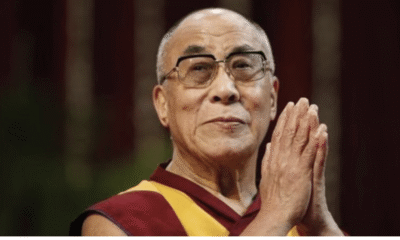
|
Getting your Trinity Audio player ready...
|
(The article was originally published in Indian Express on March 30, 2024 as a part of Dr Madhav’s column titled ‘Ram Rajya’. Views expressed are personal.)
The year 2024 was billed by Time magazine as “the election year”, when almost half of the world’s population, living in 64 countries, would go to the polls in the hope of better government and a brighter future. India, the world’s largest democracy, and the US, the second largest and oldest democracy, are holding elections this year, as are several other countries, such as the UK, Mexico and South Africa. The European Parliament too has its polls in June.
Some elections stand out. The quadrennial election of the US President is one such. At an event in a New York university last month, a student asked me about the forthcoming Parliament elections in India. I told her that the real excitement is not about India’s elections, but about the contest in the US. The world will keenly watch the outcome, which has the potential to unleash major changes in the global polity.
There is a lot of curiosity about the Indian elections too, as today, India is a rising power. While it is more or less certain that Prime Minister Narendra Modi’s government will return for a third time, there is palpable excitement over the anticipated majority for the new government. The PM himself is leading the BJP’s campaign with the slogan “Ab ki Baar, Char Sau Paar” (This time, 400-plus seats).
This confidence stems from several factors, the most important being the “track record of good governance and service delivery across sectors”, as Modi himself tweeted on the day the poll dates were announced. It would be no exaggeration to say that there is a general, all-round “feel good” factor in the country. Swadesh Singh, a University of Delhi academic, aptly described it as the “Modian Consensus”. People have nothing much to complain about.
At almost $4 trillion, the economy is doing reasonably well, and the fruits are reaching ordinary citizens. Public services, including transportation and public infrastructure, are in much better shape than before and initiatives like “women-led” and “youth-led” development have touched millions, creating a cascading effect of goodwill for the government.
Two major developments in the last five years — the abrogation of Article 370 and the construction of the Ram temple — have led to a popular upsurge that cuts across political lines.
While the world saw the “who’s who” of India’s power elite at the Ram temple inauguration, what it may not have noticed was the Sangh Parivar cadre’s outreach to 195 million households in over 6.5 lakh villages and towns in the run up to the event. Across the length and breadth of the country, about a million temples hosted celebrations on that day.
Like in the 2014 and 2019 elections, PM Modi’s personal credibility remains the most important factor in this election. But the other solid factor in the BJP’s favour is the growing strength of the party organisation. The party boasts of a primary membership of 180 million and an active member base of 20 million.
For an electorate of 966 million, India has over 10.4 lakh polling stations. The BJP today has polling station-level committees — called booth committees — in more than 8 lakh booths. These booth-level workers have been kept active through the last two years using a systematic campaign of outreach to the weaker sections, women and youth. Besides the normal organisation structure, the party has created around 140 clusters of four Lok Sabha seats each and deployed a large number of senior leaders, including some ministers, as incharge of these clusters. Momentum has been maintained through regular visits and different types of programmes at the grassroots. The “Gaon Chalo” (let’s go to the village) campaign undertaken by the party saw its leaders and cadres reaching out to almost 80 per cent of the villages in the country. The party also set up several hundred call centres through which thousands of callers reach out to targeted voters, informing them about the Modi government’s work and achievements. This network has the ability to reach almost 300 million voters in the country.
All this happens well below the radar of the media which is largely obsessed with Delhi-centric politics. This has left the Opposition parties too in a quandary. No other party can imagine building such a well-oiled machine. The much hyped INDI Alliance remains a mirage, with most regional parties shying away, while some opting to join the NDA. The Congress party, the largest in the pack, is stuck in dynastic politics with an uninspiring leadership. Some good and capable leaders find the going increasingly tough, due to the leadership’s divisive agendas and rudderlessness. Several have already left the party and more may follow.
India’s elections are like a festival. Some jarring notes notwithstanding, over the last three decades, they have become known for their transparency and efficiency. The Indian electorate has demonstrated its maturity and ability to be ruthless to all parties in the past. There is no reason to believe that this election will be any different.
Modi’s India is confident, ambitious and restless. Ending poverty and corruption, bringing absolute social justice and making India the third largest economy and a prosperous nation are some of Modi’s immediate goals. But there is a grand vision beyond that. While building a “Viksit Bharat” (developed Bharat) by 2047 is Modi’s mid-term vision, he is also offering a long-term one, not for a century, but a millennium. “I can clearly see that the coming five years will be about our collective resolve of establishing the roadmap that will guide our trajectory as a nation for the next thousand years and make India the embodiment of prosperity, all-round growth and global leadership,” he said in a tweet.
Like Robert Frost, Modi has “promises to keep, and miles to go”.




